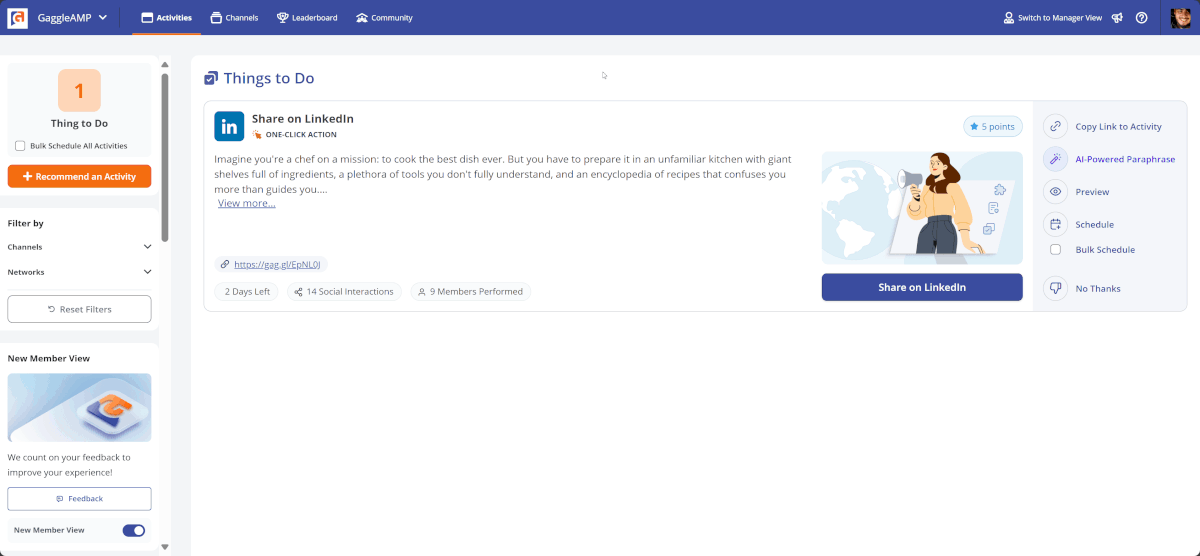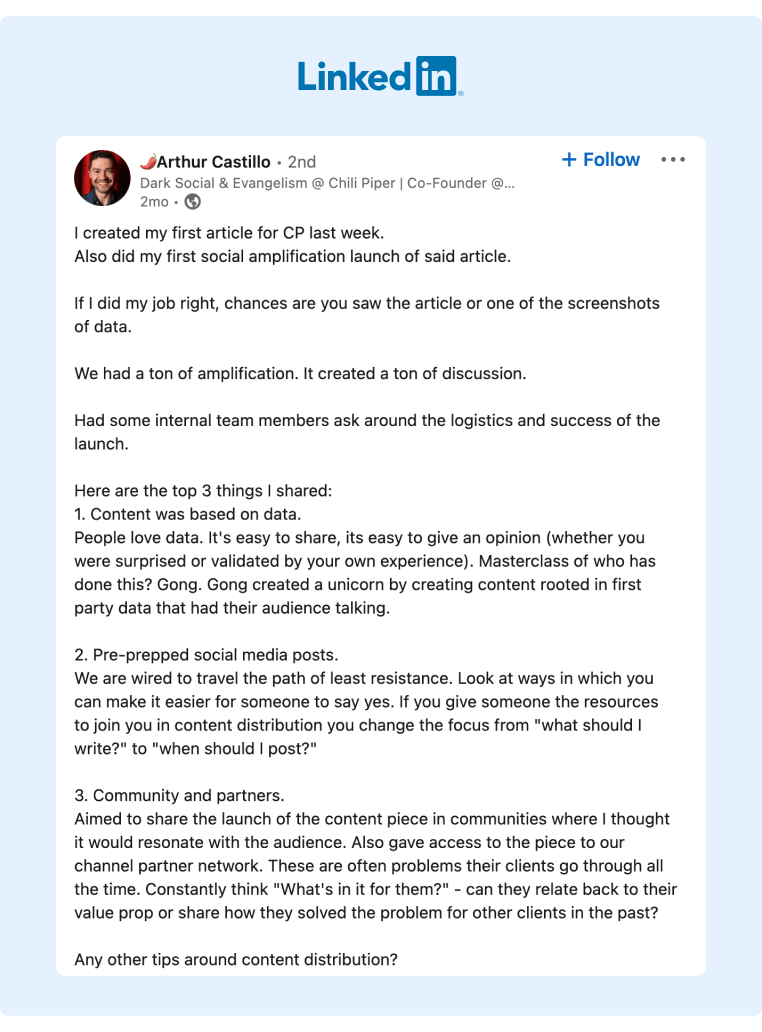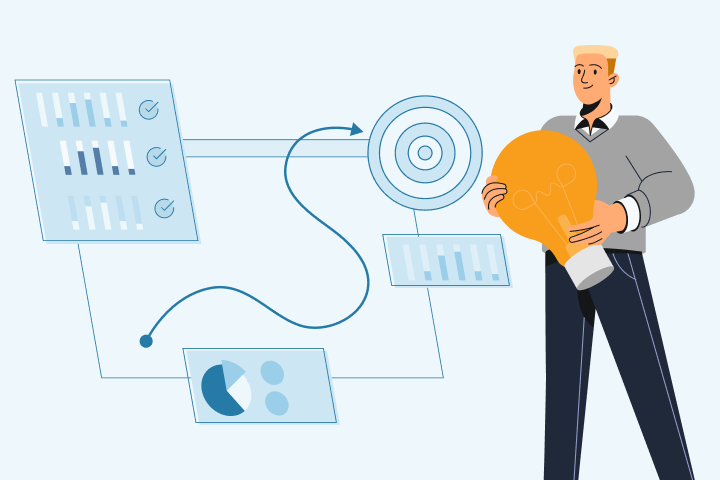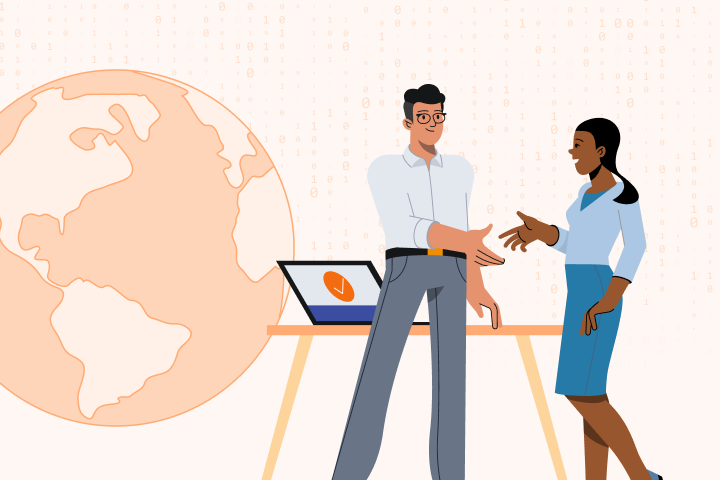How To Build the Perfect Brand Awareness Strategy
Brand awareness refers to the degree of familiarity consumers have with a brand’s product or service. It’s what makes your brand the first choice among potential customers when they are making a purchase decision.
Brand awareness is critical to the long-term survival and success of any business.
Products or services that lack brand awareness are often relegated to marketplace obscurity, while those with strong brand awareness often see their brand names being used to describe an activity or a category of products or services. It’s brand awareness at play when consumers say they’re going to ‘Xerox’ a document, ‘FedEx’ a parcel, or ‘Uber’ to the airport.
It’s also important to distinguish between two related concepts: brand awareness and brand recognition.
Brand recognition is the ability among consumers to identify your brand, usually based on visual or auditory cues. Think of Nike’s the Swoosh, McDonald’s golden arches, or Intel’s quintessential four-note bong.
Brand awareness, on the other hand, is a relatively deeper concept. It’s awareness not just of a brand’s products or services but also its unique selling propositions (USP), values, and reputation.
In this article, we’ll explore what makes brand awareness so powerful and show you how to build the perfect strategy.
Why Is Brand Awareness So Powerful?
Brand awareness delivers tangible results that drive business growth. Here’s how:
1. Increases Marketing Impact
A well-recognized brand makes your marketing efforts far more effective.
Brand awareness increases relatability and helps companies foster stronger relationships with their audiences. According to a study by Marq, 68% report that brand consistency contributed from 10% to more than 20% of their revenue increase.
Your marketing messages resonate more when people already know and trust your brand.
2. Builds Customer Trust
Trust is arguably the most important facet of brand awareness. In recent years, brand trust has redefined relationships with customers.
According to the 2023 Edelman Trust Barometer, 71% of all consumers and 79% of Gen Z say it is more important to trust the brands they buy or use today than it was in the past. So much so that U.S. consumers are willing to pay more for brands they trust. Brand trust is the deciding factor that would lead 46% to buy the higher-priced option between two similar products. 
Source: Salsify
Brand awareness is the gateway to building credibility and reliability, leading to more trusting consumers.
3. Inspires Long-Term Loyalty
Brand awareness is about more than attracting new customers. It's about keeping the ones you have and keeping them for long. A Harvard Business Review survey found that customers who trust a brand are 88% more likely to buy again.
Fred Reichheld, a leading researcher on loyalty marketing, notes that return customers tend to:
- Buy more from a business over time.
- Refer others to the business.
- Be willing to pay a premium to continue to be a customer rather than switch to an unfamiliar competitor.
Brands that people are aware of are often perceived as more reliable. When a brand reinforces this sense of reliability, it increases customer loyalty and repeat business.
4. Establishes Market Dominance
Strong brand awareness positions you as a leader in your industry. Whenever they need an online search, most people think of Google. That is the power of brand awareness.
Industry leadership and its link to brand awareness is not just about appearances either. Research by Harvard Business Review shows that trusted brands outperform their peers by up to 400% in terms of total market value.
Customers who think of your business as an industry leader are more likely to choose your products over the competition. Think about it — when you have to purchase a new tool, are there certain brands that come to mind to solve specific needs?
5. Boosts Brand Equity
Brand awareness is the foundation of brand equity —- the overall value of your brand. Think of brand equity as the difference between the value of a product with and without the brand name attached to it.
High brand awareness contributes to higher brand equity, allowing you to charge premium prices solely because of your brand name.
Another benefit is that strong brand equity leads to loyal consumers who are seven times as likely to forgive a company’s missteps and almost nine times as likely to try new offerings from the same company.
Key Elements of a Brand Awareness Strategy That Works
Now that we understand the ‘why’ behind brand awareness, let's delve into the ‘how.’
Here are the three essential elements of a successful brand awareness campaign:
1. Brand Positioning
You need to carve a niche and position your brand as the best solution to a consumer problem or the best answer to a consumer desire.
Crystal-Clear Messaging
What are your core values? What unique problem do you solve?
Answer these questions to develop a compelling brand narrative that resonates with your target audience and makes you pop out from the competition.

Source: Exit Five
Your brand messaging needs to be communicated clearly and consistently across all touchpoints, both online and offline.
Memorable Visual Identity
Your brand's visual elements —- logo, color palette, typography —- are the face of your brand.
They should be aesthetically pleasing and embody your brand's personality and values.
A well-designed visual identity instantly makes your brand recognizable and creates a lasting impression on your audience.
2. Be Everywhere They Are: Multi-Channel Presence
Mastering your website and social media channels is a prerequisite for brands competing in today’s attention economy.
Make sure to also explore other opportunities to showcase your brand, depending on where your audience is.
That could include:
- Podcasts.
- Webinars.
- Industry events.
- Strategic partnerships with complementary brands.
By diversifying your brand's touchpoints, you increase the likelihood of reaching and engaging with your target audience.
Encourage them to share your brand’s content on their personal social networks. Tools like GaggleAMP can help streamline this process, allowing you to amplify your brand's reach through the collective voice of your employees.

3. Adaptability and Connecting With Community
Your brand must be willing to adapt and innovate to stay relevant. To that end, it’s important to:
- Keep a pulse on your industry.
- Gather customer feedback.
- Be open to pivoting your strategy.
Being adaptable is much easier when you have a thriving community around your brand. They can provide relevant feedback on where they want you to go and how they feel about your previous actions.
Investing in building a strong community leads to loyalty that goes beyond repeat purchases and spills into creating active brand ambassadors.
Encourage user-generated content, authentically engage in conversations, and show that you care!
Your Brand Awareness Blueprint
Let’s now get into the weeds of developing your brand awareness strategy. Here are the six main components you need to focus on:
1. Consistent Brand Image
Think of your brand as a person. Does its personality shine through in everything it does?
Once you develop your brand image it needs to be consistent. From your website design to your social media posts, every touchpoint should reflect a consistent, unique identity.
2. Know Your Audience Inside Out
65% of customers expect companies to adapt to their changing needs and preferences, but 61% of customers say most companies treat them as a number.
The more you understand your target audience, the better you can tailor your message to resonate with them. Think about who you are talking to and what makes them tick.
Research by McKinsey found that companies that excel at personalization generate 40% more revenue!
3. Find Your Voice
Getting your brand’s tone of voice right can create a long-lasting impression on your target audience.
Consider the language-learning app Duolingo, which has a reputation for being silly, fun, and consistently aware of running trends. This is further supported by its mascot Duo’s quirky antics.
This is just an example and your brand doesn’t have to be playful in the same way. Your target audience might prefer something more serious and professional or motivational and inspiring.
You can discover your ideal brand voice by defining and studying your buyer personas.
Whatever it is, your brand's tone of voice needs to be consistent —- and if it’s not working out, don’t be afraid to make adjustments!
4. Craft a Killer USP
A good unique selling point (USP) focuses on a specific benefit you offer that your competitors don't.
Take Mailchimp, for instance.
In the crowded email marketing space, Mailchimp carved a niche for itself by offering a user-friendly platform with beautiful templates specifically designed for small businesses.
Their USP? ‘Drag-and-drop email marketing for everyone.’
It's clear, concise, and speaks directly to the pain points of the company’s target audience —- small businesses that need an easy and effective way to create email campaigns.
5. Get Found Online With SEO Research
When people search for solutions you offer, you want to be at the top of the search results. This can be tough, with thousands of competing businesses all vying for the same first-page real estate.
Invest in search engine optimization (SEO) and high-quality content marketing to increase your visibility and attract organic traffic.
6. Get Social Media Savvy
Don't just post for the sake of posting. Create content that adds value, sparks conversations, and encourages engagement.
A study by Kantar examined 235 global campaigns from 110 different brands, using proprietary data from campaign effectiveness polls. It found that brands that communicate using human language —- tapping into people’s emotions and avoiding more functional terms —- perform better on brand awareness KPIs.
But remember, it’s not just your brand’s voice that counts on social media.
What your customers and employees are saying is just as important. According to Nielsen, 88% of consumers said that they trusted recommendations from people they know, above all other forms of marketing messaging.
Social media is the gateway to tap into the conversations around your brand and its products.
Best Tactics To Increase Brand Awareness
Let’s get into the top tactics for raising your brand awareness.
1. Brand Storytelling
People connect with stories on an emotional level.
Your message needs to be wrapped into a narrative that simplifies information and transports people into your shoes —- your origins, mission, challenges, and successes.
2. Visual Assets
In the digital age, everyone is taking on a constant barrage of online visuals. Only brands that invest in high-quality and smart visual content stand out.
According to a survey by Wzyowl, 82% of people have been convinced to buy a product or service by watching a video. Visual content also includes logos, product shots, infographics, and shareable social media graphics.
3. Social Media Engagement
Posting content consistently is important, but so is engaging with your target audience!
Respond to comments, ask questions, and participate in relevant trends. Your audience wants you to listen and care about their opinions.
4. User-Generated Content (UGC)
This refers to content that your target audience creates or shares about your brand, without being paid to do so. UGC has become among the most effective brand awareness strategies due to its perceived authenticity.
You can encourage UGC by rewarding users who post testimonials, reviews, and related content about your products. Other strategies to elicit UGC include contests, giveaways, and challenges.

5. Employee Advocacy
When employees become brand advocates, they share company content on their social media, participate in industry events, and spread the word to their friends and family.
These trusted recommendations build brand awareness that sticks.
Platforms like GaggleAMP help you tap into the full potential of employee advocacy. They streamline, amplify, and track your employee advocacy programs.
Advanced Strategies for Brand Awareness
When everyone’s doing the basics, you need to be one step ahead. Here are a few advanced brand awareness strategies worth looking into:
1. AI-Fueled Brand Intimacy
Artificial intelligence can help forge genuine bonds with your customers through more precise targeting than ever before.
AI-powered chatbots can provide instant customer support, while recommendation engines can suggest products tailored to individual preferences.
Platforms like GaggleAMP have integrated AI to deliver employee advocacy experiences that resonate rather than replicate. Its AI capabilities include paraphrasing content for authentic employee sharing, diversified recommendations, and content amplification.
2. Personalization Mastery
According to Slideshare, 80% of consumers are more likely to do business with a brand that offers personalized experiences.
One-size-fits-all marketing doesn’t cut it anymore. You need to speak in your target audience’s language and understand their world. Deep data insights can help provide relevant recommendations and options for individual customers.
3. Immersive Brand Worlds
As we step into the future, more brands are going to be using virtual reality and augmented reality to transport customers into their brand universes.
The possibilities are endless —- virtual factory tours, ‘try on’ products from the comfort of their homes, and gamified shopping experiences.
Steps for Measuring Brand Awareness
Good decisions require good data, so you need to measure the right brand awareness KPIs.
- Direct Traffic: Monitor the number of visitors coming directly to your website or digital channels without being referred. High direct traffic indicates strong brand awareness and recall.
- Brand Mentions: Keep track of how often your brand is organically mentioned across social media platforms, online forums, review sites, and other digital spaces. Both positive and negative mentions provide great insights into brand perception.
- Branded Search: Search engine data shows you the volume of branded searches related to your company, products, or services. Higher numbers imply that people are thinking of your brand when they’re searching for particular products.
- Social Listening: Social listening tools help gauge how people truly perceive and discuss your brand online. That includes sentiment analysis, share of voice, and understanding common themes or narratives surrounding your brand.
- Brand Awareness Surveys: Go straight to the source! Conduct periodic surveys with your target audience to measure aided and unaided brand awareness, brand associations, and how your brand stacks up against competitors in their minds.
Brand Awareness in Action: B2B Tech Success Stories
Many of the biggest businesses today leverage brand awareness to be where they are. Their stories provide valuable insights for your brand—-no matter what stage you’re at.
HubSpot's Inbound Marketing Success
HubSpot, a leading provider of inbound marketing software, makes big strides using inbound marketing. It consistently focuses on content marketing to build a well-recognized, authoritative brand.
- Educational Content: HubSpot produces high-quality, educational content that addresses the pain points of its target audience. This includes blog posts, e-books, and how-to guides.
- HubSpot Academy: HubSpot also offers free certification courses on inbound marketing, sales, and customer service to cement its position as a trusted authority.
- SEO Optimization: HubSpot stays on the ball, continuously optimizing its content for search engines. It consistently ranks high and attracts high volumes of organic traffic.
- Events and Webinars: HubSpot hosts regular events and webinars, most notably the annual INBOUND event. The event has keynote speakers, breakout sessions, networking events, and even concerts. The company uses the hashtag #INBOUND to create an excited community around the conference.
- Free Tools and Trials: Offering free tools such as HubSpot's Website Grader and trials of their software provide value upfront and encourage users to engage with HubSpot's other offerings.
Salesforce’s Multifaceted Marketing
Salesforce, a global leader in CRM solutions, uses a multi-faceted marketing strategy to build long-lasting brand awareness and market its platform to diverse industries.
- Customer-Centric Approach: Like HubSpot, Salesforce produces a wealth of informative and engaging content, including blog posts, webinars, and e-books.
- Thought Leadership: Salesforce presents itself as a trusted authority in the tech industry. Thought leadership requires going beyond specific products and showcasing a commitment to broader industry issues, such as ethical technology development.
- Multi-Channel Marketing: Salesforce's multi-channel marketing strategy raises brand awareness across email, social media, mobile marketing, and events. What others can learn from this is to ensure consistent brand messaging regardless of the touchpoint.
- Partnerships: Salesforce’s partner ecosystem includes collaborations with giants like IBM and Amazon. Collaborations and partnerships can benefit a business in many ways —- including gaining credibility by associating yourself with other reputable brands. Businesses also benefit from getting their name out to a wider audience.
Best Tools and Resources for Building Brand Awareness
Your brand awareness efforts are incomplete without the right tools to streamline your efforts and maximize your impact.
These are a few platforms that can help take your brand to the next level:
1. GaggleAMP
GaggleAMP is a leading employee advocacy platform that amplifies your brand message through your workforce. It turns employees into brand advocates who share content across their social networks to bolster the impact of marketing efforts.
- Content Sharing: Employees share pre-approved, on-brand content on their social media accounts. This increases the content's reach and credibility since it comes from trusted sources.
- AI and Content Creation: GaggleAMP streamlines the content creation process with AI-powered paraphrasing technology to create pre-written content for the employee. By transforming and re-wording content, your team will have unique and authentic content to share on social media. This organic approach also boosts employee engagement.
- Analytics: The platform provides detailed analytics to measure the effectiveness of campaigns, track engagement, and optimize future strategies.
2. Hootsuite
Hootsuite helps brands manage multiple social media accounts from a single dashboard. It’s ideal for scheduling posts, monitoring social media conversations, and analyzing performance.
- Content Scheduling: Plan and schedule posts across various social media platforms to maintain a consistent online presence.
- Monitoring: Track mentions, keywords, and hashtags to stay on top of conversations relevant to your brand.
- Analytics: Measure the performance of your social media campaigns and gain insights into audience engagement.
3. Google Analytics
This free tool provides valuable insights into your website traffic and user behavior.
You can track where your visitors are coming from, what pages they're viewing, and how long they're staying on your site. It's high-quality data, and it helps you identify your most popular content and optimize your website for better engagement.
4. Semrush
SEO tools like Semrush track your search engine rankings, analyze your competitors, and identify keyword opportunities. It's a good idea to have such a tool to augment and improve your SEO strategy.
5. BuzzSumo
This content discovery tool identifies trending topics and popular content in your industry. You can use it to find inspiration for your content, track your competitors, and discover influencers who can amplify your reach.
6. Brand24
Brand24 is a social listening tool that lets you monitor brand mentions, track sentiment, and identify trending conversations around your brand.
Receiving insights about both positive and negative perceptions around your brand helps you engage better with your audience, address concerns, and identify opportunities for brand building.
7. SurveyMonkey
Designing and distributing your own survey can be trickier than you think—and getting it wrong can lead to bad data and disastrous decision-making.
SurveyMonkey lets you gather feedback from your target audience about their awareness and perception of your brand. You can use this data to finetune your messaging, improve your products or services, and build stronger customer relationships.
Brand Awareness Pitfalls: What Not To Do
Even with the best intentions, there are common missteps that can derail your brand awareness efforts. Steer clear of the following mistakes to keep your strategy on track:
- Inconsistent Messaging: Your brand should speak with one voice across all channels. Conflicting messages confuse your audience and dilute your brand identity.
- Ignoring Customer Feedback: There’s a reason why they say the customer is always right. They can’t run your business for you, but they are a goldmine of insights. Listen to both positive and negative feedback with open ears.
- Resistance To Change: The market will change —- sometimes in directions you don’t like. A brand that refuses to adapt will quickly become irrelevant. There’s no choice but to be open and ready to embrace change.
- Neglecting Measurement: It’s tempting to invest a lot in flashy initiatives and neglect the less exciting part: proper tracking. Without analyzing the right brand awareness KPIs, you won't know what's working and what's not.
- Focusing on Quantity Over Quality: Reaching a large audience is great. But it’s not just about the numbers —- it’s about high-quality content that’ll make those numbers stick around.
- Overlooking Employee Advocacy: Your employees are your most powerful brand ambassadors. Don't underestimate the impact they can have in spreading the word about your brand.
Your Brand, Your Story: Take Control
Building brand awareness isn't a sprint —- it's a marathon that requires consistent effort, creativity, and a willingness to adapt. The right strategies and tools in your arsenal can help you create a brand that’s not just recognized but understood, appreciated, and remembered.
Ready to ignite your brand awareness and build a loyal following? GaggleAMP empowers your employees to become passionate brand advocates, helping spread your brand organically to relevant and receptive audiences. Start a free trial today!











